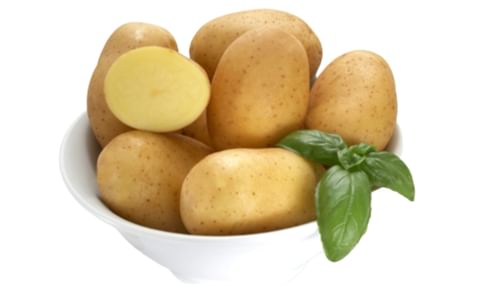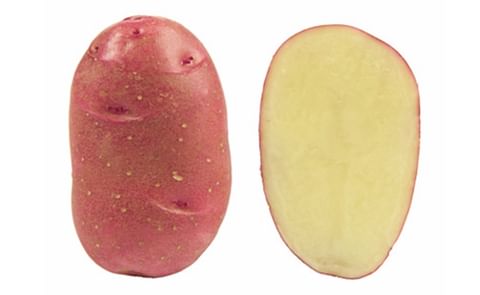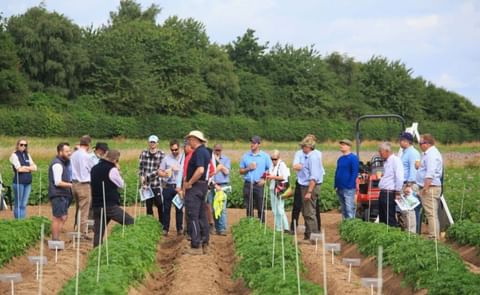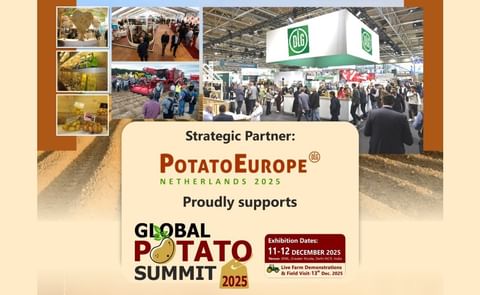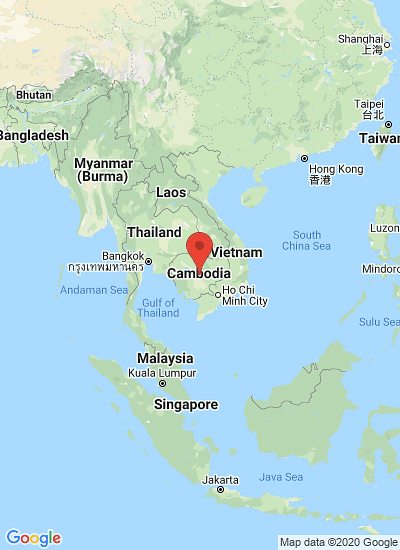After three months of testing, the preliminary results indicate that the provinces of Pursat, Battambang, and Mondulkiri are the most suitable for growing potatoes
Potato Research Centre Cambodia identifies best locations for potato cultivation
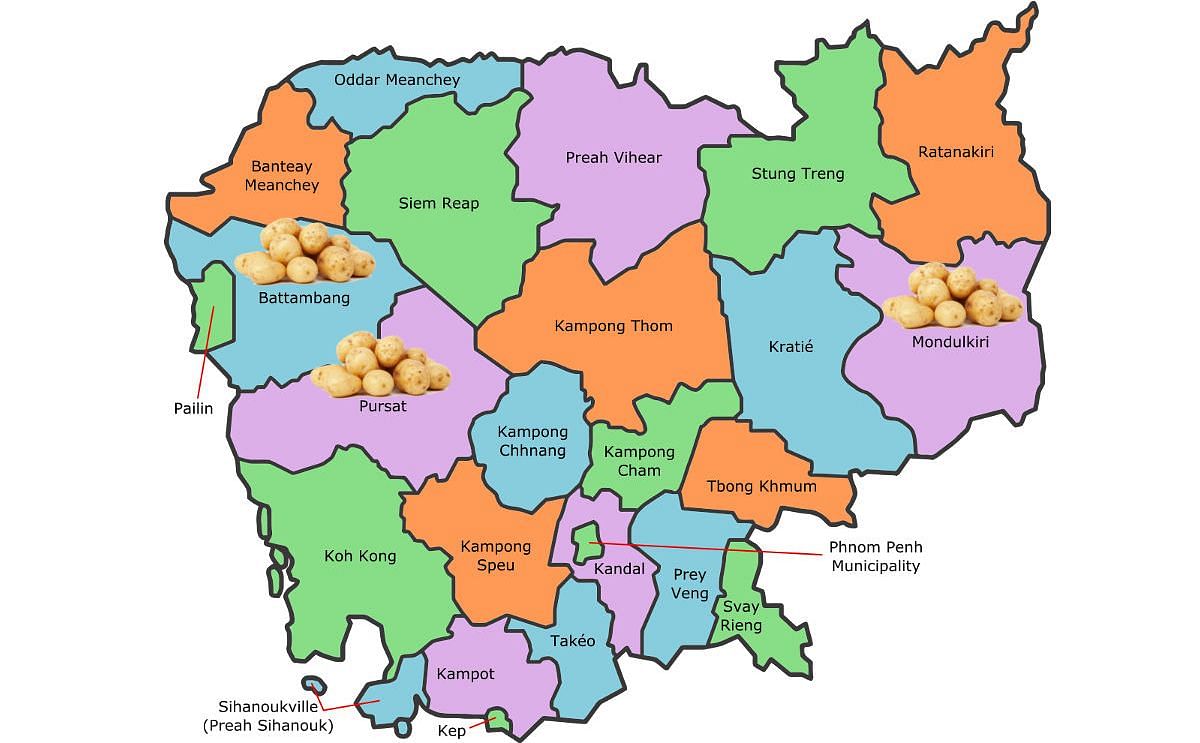
In Cambodia, researchers at the Potato Research Centre at the Royal University of Agriculture announced last week that five provinces and the capital itself will become the country's hub for potato growing after successful tests of a range of potato varieties were recently finished.
The six locations were selected for testing were the university, Kampong Chhang, Battambang, Tboung Khmum, Pursat and Mondulkiri provinces.
Var Sophal, researcher at the Potato Research Centre at the Royal University of Agriculture said that after three months of testing, Pursat, Battambang, and Mondulkiri were the most suitable for growing potatoes.
These offered marketable (not included small and damaged tubers to be used for other purposes) yields of up to 17 to 20 tonnes per hectare while the other locations offered yields of under 17 tonnes per hectares due to their climate and soil.
He said the potato growing season lasted three months, starting from November.
Mr Sophal said that of 17 varieties brought from Thailand, Vietnam, Germany and Ireland, the varieties – Tornado, Madeira, Concordia, Julinka, Jelly, Electra and Fandango show good results. The two year trials show as well that certified seed of good quality is crucial for the variety performance.
Var Sophal, researcher at the Potato Research Centre at the Royal University of Agriculture:
He added that since 2016, GIZ has been collaborating with the Potatoes Research Centre in the Royal University of Agriculture to initiate potato trials in areas where the weather is favourable for potato cultivation by bringing 17 varieties from Vietnam, Thailand, Ireland and Germany.
Several varieties from Europe appeared to perform better in quality and yield.
Gunter Riethmacher, country director of the German agency GIZ:
Yields could be higher if the crops were allowed to reach their fully mature state, up to 110 days for some varieties.
The fact that harvesting was carried out at just 89 days due to increasing heat stress meant that some varieties were in the middle of tuber development.
Thus, farmers may need to choose the right season and improve pest control, GIZ says.
According to RUA research, the cost for each farmer per hectare is about $5,472. This includes soil preparation ($160 for tractor rent), labour ($2,170), certified seed ($2,000), fertiliser ($435), pesticides ($132), petrol ($225), depreciation ($150) and other costs ($200).
However, in return, an estimated the farm gate revenue could be from $16,500 for ten tonnes to $33,000 for 20 tonnes. The estimated revenues are highest qualities: washed, yellow smooth skin, regular tubers, with no damage, good packages and marketing. Farmers would get $11,400 for ten tonnes to $22,800 for 20 tonnes for medium qualities: red skin, deep eyes, low damage, packed in net bags. The figures would be $3,800 for ten tonnes to $7,600 per 20 tonnes for third qualities: red skin potatoes, deep eyes, with medium damage and skin irregularity, packed in plastic bags.
Farmers would get $11,400 for ten tonnes to $22,800 for 20 tonnes for red skin, deep eyes, low damage, packed in net bags.
The figures would be $3,800 for ten tonnes to $7,600 per 20 tonnes for all red skin potatoes, deep eyes, with medium damage and skin irregularity, packed in plastic bags.
The six locations were selected for testing were the university, Kampong Chhang, Battambang, Tboung Khmum, Pursat and Mondulkiri provinces.
Var Sophal, researcher at the Potato Research Centre at the Royal University of Agriculture said that after three months of testing, Pursat, Battambang, and Mondulkiri were the most suitable for growing potatoes.
These offered marketable (not included small and damaged tubers to be used for other purposes) yields of up to 17 to 20 tonnes per hectare while the other locations offered yields of under 17 tonnes per hectares due to their climate and soil.
He said the potato growing season lasted three months, starting from November.
Mr Sophal said that of 17 varieties brought from Thailand, Vietnam, Germany and Ireland, the varieties – Tornado, Madeira, Concordia, Julinka, Jelly, Electra and Fandango show good results. The two year trials show as well that certified seed of good quality is crucial for the variety performance.
Var Sophal, researcher at the Potato Research Centre at the Royal University of Agriculture:
“Cambodia imports more than 5,000 tonnes of potato per year from Thailand, Vietnam, China, Japan, Australia and America.”Gunter Riethmacher, country director of the German agency GIZ, said potatoes were commonly found in Cambodian dishes as a garnish, in soups and in many fast food restaurants.
“The reason we push growing potatoes in Cambodia is because potatoes available in the Cambodian market are imported.”
“Thus, it is a concern for us. Why can other countries grow them and we cannot? We are an agriculture country.”
“We have to seek way to produce potatoes without reliance on external exports.”
He added that since 2016, GIZ has been collaborating with the Potatoes Research Centre in the Royal University of Agriculture to initiate potato trials in areas where the weather is favourable for potato cultivation by bringing 17 varieties from Vietnam, Thailand, Ireland and Germany.
Several varieties from Europe appeared to perform better in quality and yield.
Gunter Riethmacher, country director of the German agency GIZ:
“Potatoes have huge potential for Cambodia. It is good for Cambodia to bring and grow more potatoes to generate income for the people.”However, one season was not enough to determine the best performing and economical cultivars
“What we are trying to do is provide technical training to the private sector and to the university to screen the best varieties for the local conditions.”
“There are many varieties for different soil, climate, water situation. We have to select the right varieties for the right provinces and location so that farmers can get the best output.”
Yields could be higher if the crops were allowed to reach their fully mature state, up to 110 days for some varieties.
The fact that harvesting was carried out at just 89 days due to increasing heat stress meant that some varieties were in the middle of tuber development.
Thus, farmers may need to choose the right season and improve pest control, GIZ says.
According to RUA research, the cost for each farmer per hectare is about $5,472. This includes soil preparation ($160 for tractor rent), labour ($2,170), certified seed ($2,000), fertiliser ($435), pesticides ($132), petrol ($225), depreciation ($150) and other costs ($200).
However, in return, an estimated the farm gate revenue could be from $16,500 for ten tonnes to $33,000 for 20 tonnes. The estimated revenues are highest qualities: washed, yellow smooth skin, regular tubers, with no damage, good packages and marketing. Farmers would get $11,400 for ten tonnes to $22,800 for 20 tonnes for medium qualities: red skin, deep eyes, low damage, packed in net bags. The figures would be $3,800 for ten tonnes to $7,600 per 20 tonnes for third qualities: red skin potatoes, deep eyes, with medium damage and skin irregularity, packed in plastic bags.
Farmers would get $11,400 for ten tonnes to $22,800 for 20 tonnes for red skin, deep eyes, low damage, packed in net bags.
The figures would be $3,800 for ten tonnes to $7,600 per 20 tonnes for all red skin potatoes, deep eyes, with medium damage and skin irregularity, packed in plastic bags.
Like to receive news like this by email? Join and Subscribe!
NEW! Join Our BlueSky Channel for regular updates!
Highlighted Company
Potato varieties mentioned
Sponsored Content
Sponsored Content
Sponsored Content
Sponsored Content
Sponsored Content



